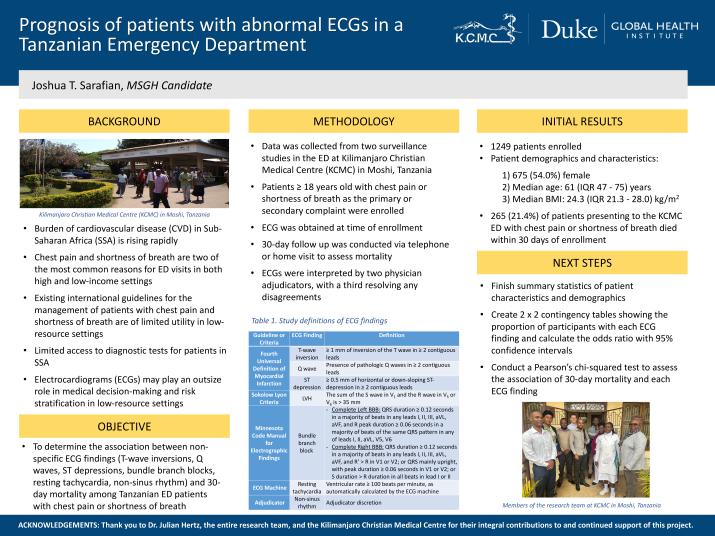Prognosis of patients with abnormal ECGs in a Tanzanian Emergency Department

Prognosis of patients with abnormal ECGs in a Tanzanian Emergency Department
Project overview
In both high- and low-income settings, chest pain and shortness of breath are two of the most common reasons for Emergency Department (ED) visits. These symptoms can arise from a wide range of medical conditions, spanning from life-threatening cardiovascular diseases to less severe non-cardiac issues. While there is an extensive body of literature to guide the approach of ED physicians in the diagnosis and disposition of patients with such symptoms, these studies were conducted almost exclusively in high-income settings. Additionally, existing international guidelines for the management of ED patients with chest pain or shortness of breath are of limited utility in resource-limited settings, where many advanced diagnostic modalities to distinguish life-threatening cardiac pathologies from more benign non-cardiac diseases may not be commonly available. For example, in many EDs in Sub-Saharan Africa, cardiac biomarker testing, echocardiography, non-invasive cardiac stress testing, and cardiology consultation may be unavailable. Therefore, diagnostic testing that is more widely available, like electrocardiograms (ECGs), together with history and physical exam, may play an outsize role in medical decision-making and risk stratification for ED physicians in resource limited settings.
This project aims to address this gap by investigating the prognostic value of non-specific ECG findings, including T-wave inversions, Q waves, left ventricular hypertrophy, bundle branch block, non-sinus rhythms, ST depressions, and resting tachycardia, among patients presenting to the ED at Kilimanjaro Christian Medical Centre in Moshi, Tanzania. By understanding the associations between these ECG findings and 30-day mortality, this study seeks to enhance risk stratification and decision-making processes in resource-constrained settings, ultimately improving patient outcomes.
Last updated on October 5, 2023
